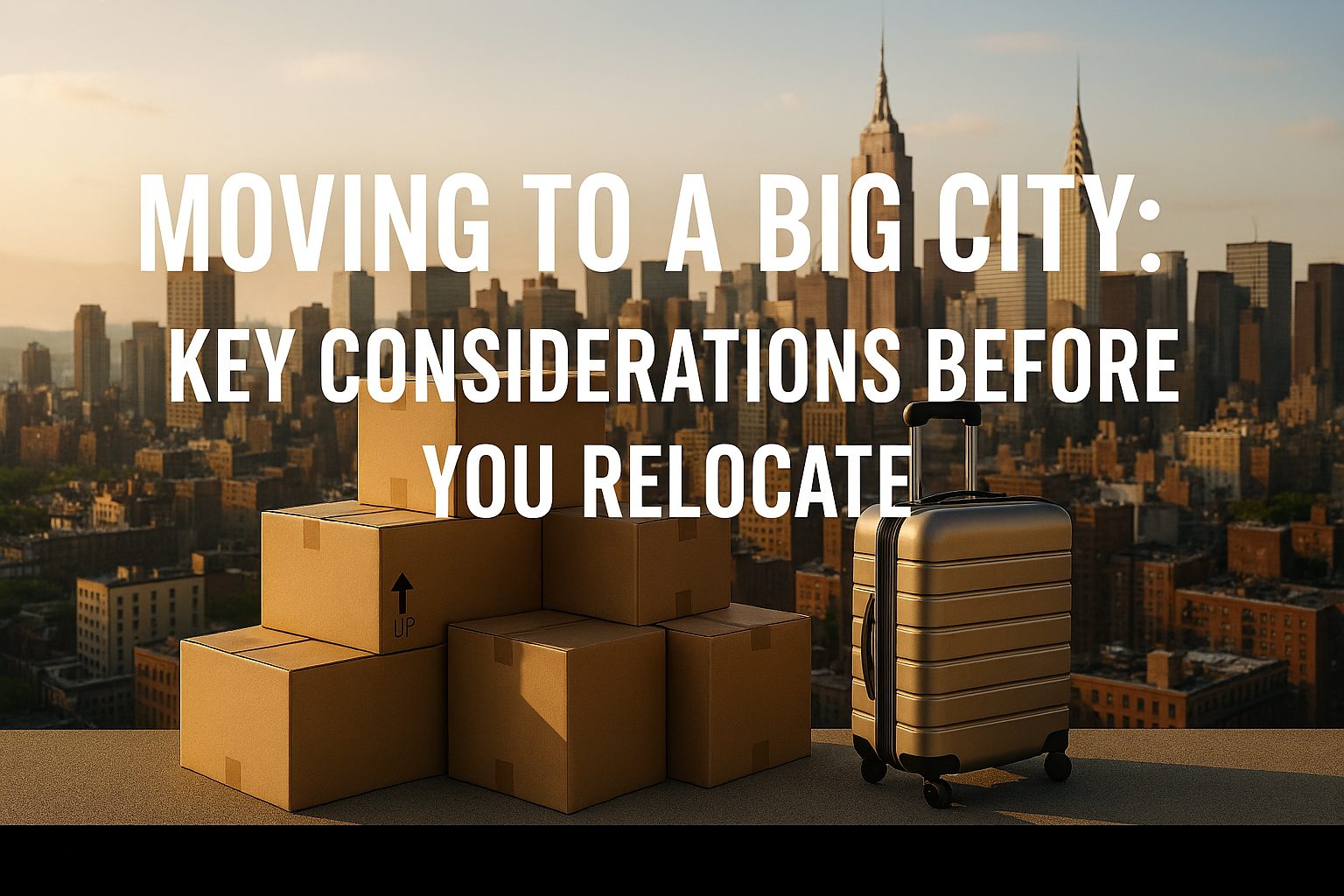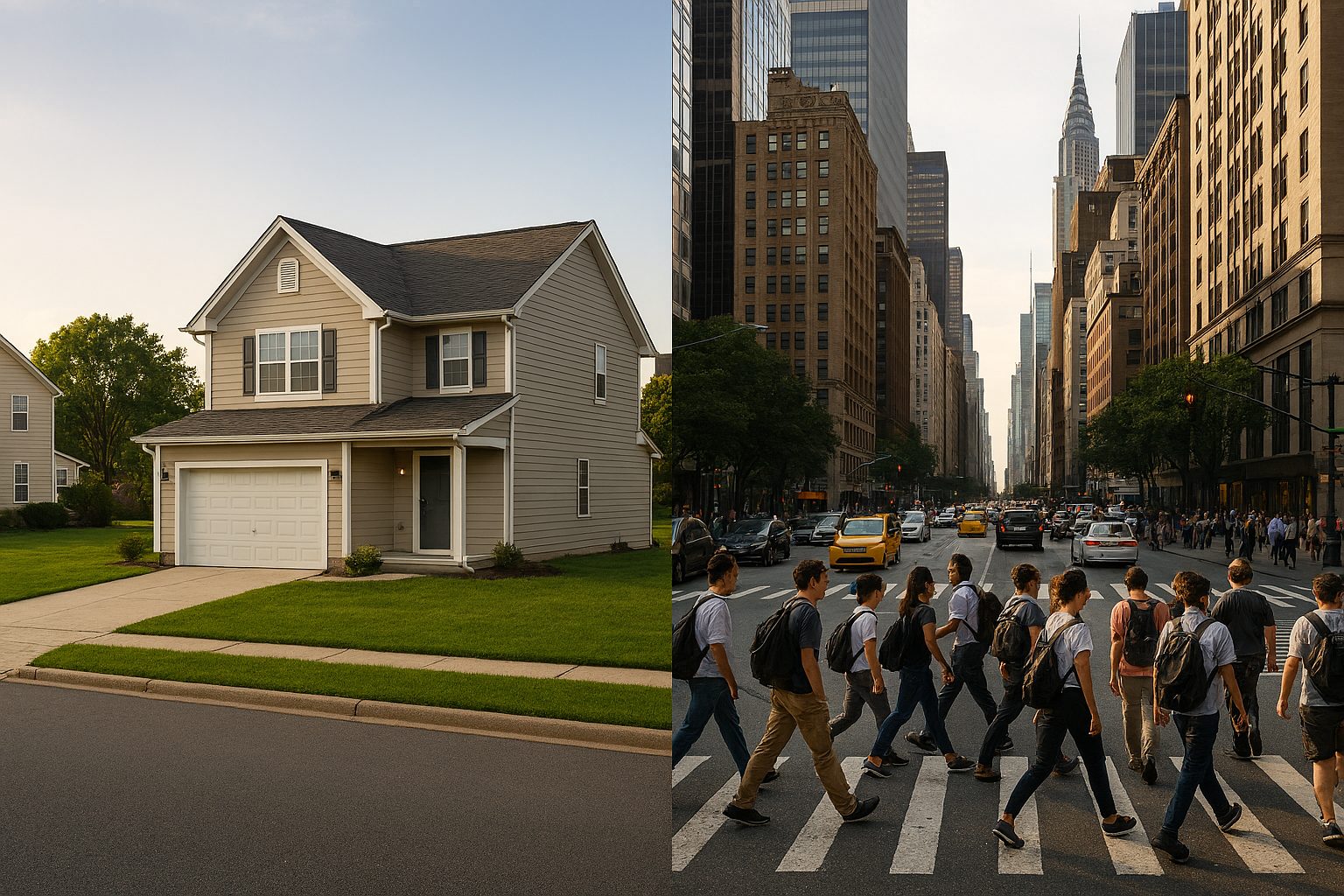
Written by Sarah Velasquez for Love Where You Live By Léo.
Image : Copilot AI
Relocating to a big city can be one of the most transformative decisions in your personal and professional life. From new career opportunities to cultural diversity and networking potential, the rewards are immense — but so are the challenges. Whether you’re chasing career growth, education, or a lifestyle upgrade, it’s essential to plan strategically.
Key Points
Big-city relocation demands preparation in five core areas: career alignment, housing, financial planning, social integration, and well-being. Invest in education or certifications early to stay competitive, and build a realistic plan that blends ambition with sustainability.
Building Competitive Advantage in Urban Job Markets
Urban centers are magnets for ambitious professionals. One of the most effective ways to thrive in these competitive markets is by strengthening your qualifications through higher education. Earning a bachelor of science degree in computer science can significantly enhance your career prospects, particularly in industries like technology, data analytics, and software development.
Online degree programs allow you to balance full-time work with your studies, ensuring flexibility without sacrificing career momentum.
For related perspectives on remote learning’s impact on employability, review these career acceleration insights.
Cost of Living: Hidden Realities and Budget Adjustments
Before you relocate, understand that urban living is more expensive than it looks. Rent, commuting, and food costs can consume much of your income.
Checklist: Budget Essentials for City Life
- Rent and utilities (expect a 20–40% increase vs. smaller towns)
- Public transportation or parking
- Food and dining costs
- Health insurance and wellness
- Savings and emergency fund (minimum 3 months)
- Subscription and lifestyle creep management
To explore budgeting strategies, review this urban finance planning guide and this housing affordability index.
How to Relocate Smoothly: Step-by-Step Guide
Step 1 – Research the City’s DNA
Investigate employment sectors, commuting infrastructure, and cultural offerings. Use platforms like City-Data or Numbeo to compare options.
Step 2 – Secure Employment or Income Stability
Many professionals secure a job before moving; others freelance or work remotely. Check listings through LinkedIn Jobs or remote platforms such as We Work Remotely.
Step 3 – Plan Housing Early
Start with short-term rentals. Research neighborhoods with proximity to transit, work, and amenities.
Step 4 – Build a Local Network
Attend industry meetups or join professional associations. Use Meetup or Eventbrite to find events.
Step 5 – Prioritize Health & Adaptation
Big-city pace can strain mental health. Join gyms, parks, or volunteer groups to maintain balance.
Lifestyle Adjustments: Opportunities and Challenges
Pros
- Broader career opportunities
- Networking and collaboration
- Cultural diversity and exposure
Cons
- Higher cost of living
- Limited space and slower savings growth
- Possible social fatigue
For insights into city adaptation psychology, see APA’s urban resilience research.
Decision Factors Table
| Factor | Description | Key Metric | Action Step |
| Career Fit | Match between your skills and city job market | Job-to-skill ratio | Review LinkedIn data before applying |
| Cost of Living | Affordability of rent, transport, and food | COL Index | Compare via Numbeo |
| Community | Access to social and professional networks | Meetup density | Attend events in target field |
| Transit Access | Commute feasibility | Avg. commute time | Use Google Maps to simulate routes |
| Safety & Wellness | Crime and healthcare quality | Public index | Cross-reference with City-Data |
FAQs
Q: How long does it take to adjust to city life?
Typically 3–6 months. Allow time for habit formation and neighborhood familiarity.
Q: Should I rent or buy first?
Rent initially — it gives you flexibility while learning the city’s rhythm.
Q: How do I find friends and community fast?
Join clubs, coworking spaces, or online community groups aligned with your interests.
Q: What if I get overwhelmed?
Practice time blocking, mindfulness, and prioritize self-care. Urban intensity requires conscious recovery routines.
Glossary
- Urban Ecosystem – The network of people, systems, and infrastructures that define city life.
- Cost-of-Living Index (COLI) – A standardized measure comparing expenses between locations.
- Dwell Time – How long individuals engage with content or environments — often used in digital and behavioral analysis.
- Career Mobility – The capacity to shift or advance within industries or geographic areas.
- Economic Resilience – Ability to maintain financial stability under cost pressures.

Product Spotlight: SmartMove Relocation Tracker
A lesser-known tool worth exploring is SmartMove Relocation Tracker, an app that integrates cost-of-living calculators, visa timelines, and apartment search APIs. It syncs with LinkedIn and Notion to manage relocation logistics. You can explore similar relocation optimization tools via ProductHunt.
Conclusion
Relocating to a major city isn’t just a move — it’s a systemic shift in lifestyle, economy, and mindset. With proper planning, upgraded qualifications, and realistic budgeting, the transition becomes a growth accelerator rather than a stress test. Whether your next step involves career expansion, education, or reinvention, the key is simple: prepare structurally, adapt emotionally, and grow intentionally.
Find your perfect Annapolis home with Léopoldine Farrington. Reach out to Léopoldine today and start your journey to loving where you live!

 Facebook
Facebook
 X
X
 Pinterest
Pinterest
 Copy Link
Copy Link

